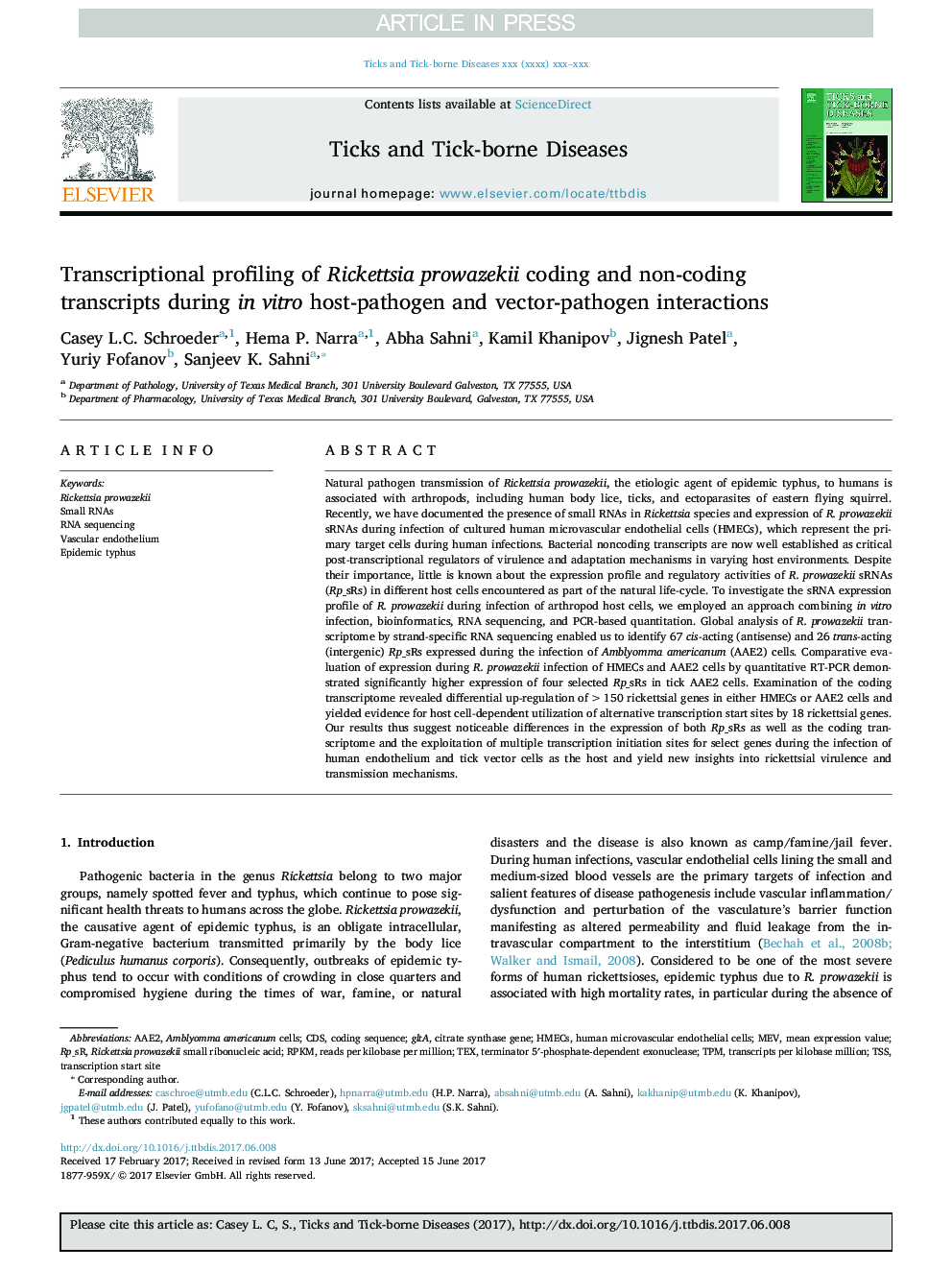| Article ID | Journal | Published Year | Pages | File Type |
|---|---|---|---|---|
| 5546266 | Ticks and Tick-borne Diseases | 2017 | 10 Pages |
Abstract
Natural pathogen transmission of Rickettsia prowazekii, the etiologic agent of epidemic typhus, to humans is associated with arthropods, including human body lice, ticks, and ectoparasites of eastern flying squirrel. Recently, we have documented the presence of small RNAs in Rickettsia species and expression of R. prowazekii sRNAs during infection of cultured human microvascular endothelial cells (HMECs), which represent the primary target cells during human infections. Bacterial noncoding transcripts are now well established as critical post-transcriptional regulators of virulence and adaptation mechanisms in varying host environments. Despite their importance, little is known about the expression profile and regulatory activities of R. prowazekii sRNAs (Rp_sRs) in different host cells encountered as part of the natural life-cycle. To investigate the sRNA expression profile of R. prowazekii during infection of arthropod host cells, we employed an approach combining in vitro infection, bioinformatics, RNA sequencing, and PCR-based quantitation. Global analysis of R. prowazekii transcriptome by strand-specific RNA sequencing enabled us to identify 67 cis-acting (antisense) and 26 trans-acting (intergenic) Rp_sRs expressed during the infection of Amblyomma americanum (AAE2) cells. Comparative evaluation of expression during R. prowazekii infection of HMECs and AAE2 cells by quantitative RT-PCR demonstrated significantly higher expression of four selected Rp_sRs in tick AAE2 cells. Examination of the coding transcriptome revealed differential up-regulation of >150 rickettsial genes in either HMECs or AAE2 cells and yielded evidence for host cell-dependent utilization of alternative transcription start sites by 18 rickettsial genes. Our results thus suggest noticeable differences in the expression of both Rp_sRs as well as the coding transcriptome and the exploitation of multiple transcription initiation sites for select genes during the infection of human endothelium and tick vector cells as the host and yield new insights into rickettsial virulence and transmission mechanisms.
Keywords
Related Topics
Life Sciences
Agricultural and Biological Sciences
Animal Science and Zoology
Authors
Casey L.C. Schroeder, Hema P. Narra, Abha Sahni, Kamil Khanipov, Jignesh Patel, Yuriy Fofanov, Sanjeev K. Sahni,
